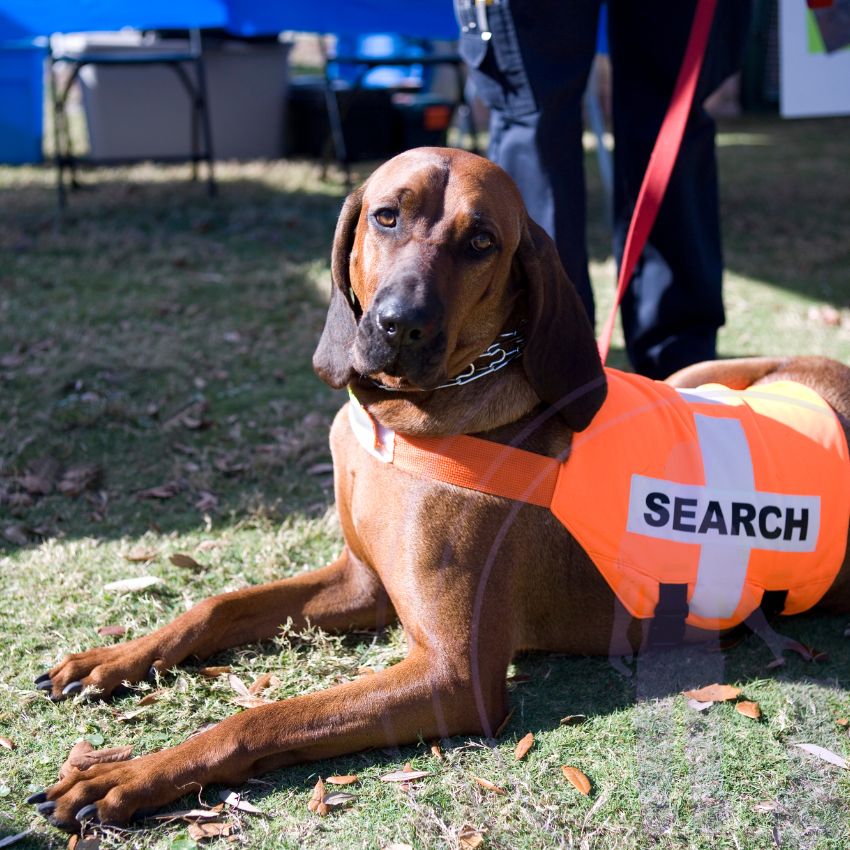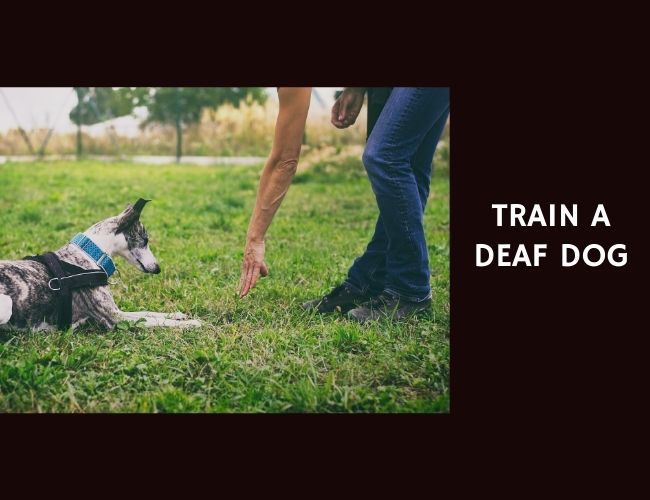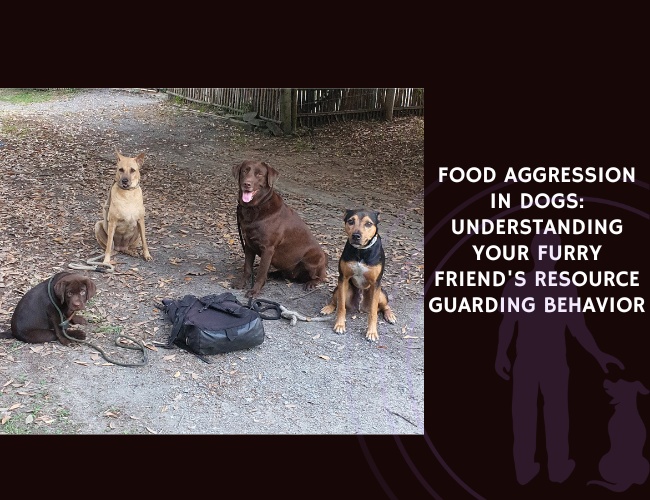Understanding Mental Stimulation in Dogs
Definition and Importance of Mental Stimulation for Canine Well-Being
Mental stimulation in dogs refers to activities that challenge their minds, encouraging engagement and preventing boredom. These activities can include problem-solving tasks, exploration, training new skills, and scent work. Mental stimulation is essential for dogs’ overall well-being because it keeps their minds active and helps prevent behavioral issues like anxiety and destructive behaviors. Dogs are intelligent creatures that crave mental challenges, and neglecting this aspect of their care can lead to numerous problems.
How Cognitive Challenges Support Memory, Learning, and Adaptability
Dogs, like humans, benefit from cognitive challenges. Activities that stimulate the mind can enhance memory, boost learning abilities, and increase adaptability. Regular cognitive exercises, such as puzzle toys and training sessions, help keep a dog’s brain sharp. They need these challenges to remain flexible in their thinking and to adjust to new environments or situations. Engaging in mental activities regularly can help create new neural pathways, which are crucial for ongoing cognitive health, especially as dogs age.
The Connection Between Mental Stimulation and Behavioral Health
Behavioral health in dogs is closely linked to their level of mental stimulation. When dogs are mentally engaged, they are less likely to develop undesirable behaviors such as chewing, digging, and excessive barking. These negative behaviors are often a sign of boredom or frustration. Additionally, mentally stimulated dogs tend to display improved focus, impulse control, and overall confidence. Cognitive engagement can also reduce anxiety and stress by providing dogs with a sense of purpose and accomplishment.
Overall, mental enrichment is a key component of a holistic approach to dog care. It supports not only cognitive function but also emotional and behavioral health, leading to happier, healthier pets.
Stay tuned as we further explore how to recognize the signs that your dog needs more mental exercise and the incredible benefits regular mental enrichment can provide.
Signs Your Dog Needs More Mental Exercise
Mental stimulation is crucial for a dog’s overall well-being, preventing boredom, anxiety, and destructive behaviors. Recognizing when your dog needs more mental exercise can help avoid these issues and ensure a happy, well-balanced pet. Let’s dive into the common indicators of insufficient mental stimulation and how to address them.
Common Behavioral Indicators of Insufficient Mental Stimulation
When dogs do not receive enough cognitive challenges, they often express it through their behavior. Here are some common signs:
- Destructive Behaviors: Chewing furniture, excessive digging, and gnawing on objects are all telltale signs that your dog might be bored and looking for something to do.
- Hyperactivity and Restlessness: If your dog is constantly on the move, unable to settle down, or has bursts of energy at unusual times, they might need more mental challenges.
- Excessive Barking or Whining: These vocalizations can signal frustration or boredom, as your dog tries to communicate their need for engagement.
Physical and Emotional Symptoms of Boredom
Boredom in dogs can manifest in both physical and emotional symptoms, which can sometimes be subtle. Recognizing these signs early can prevent more serious issues down the line.
- Physical Symptoms: These can include repetitive actions like pacing, licking, or self-destructive behaviors such as chewing their paws. Dogs may also exhibit weight gain or loss due to inactivity or changed eating habits.
- Emotional Symptoms: Bored dogs can become anxious, depressed, and less responsive to their surroundings. They may show a lack of interest in activities they previously enjoyed.
How to Recognize When Your Dog Is Understimulated
To ensure your dog remains healthy and happy, it’s crucial to recognize signs of understimulation and take appropriate actions.
- Loss of Interest in Toys or Games: If your dog shows disinterest in activities and toys that once excited them, it might be a sign they need new, more challenging ones.
- Disengagement: A dog that isolates itself and doesn’t respond to stimuli may be mentally understimulated. This could lead to potential behavioral issues if not addressed.
- Changes in Appetite: Dogs can be stressed by boredom, leading to overeating as a source of comfort or reduced appetite due to depression.
By paying close attention to these signs, you can take proactive steps to enrich your dog’s mental landscape, nurturing a well-rounded, content furry friend.
Transitioning into understanding the benefits, regular mental enrichment doesn’t just alleviate these negative symptoms but also provides substantial benefits by reducing destructive behaviors, enhancing focus, boosting confidence, and more. Through structured activities and daily routines, dogs can thrive both mentally and physically. Ending understimulation ensures a happier and healthier life for our canine companions.
Benefits of Regular Mental Enrichment
Mental enrichment is essential for ensuring your dog’s well-being and happiness. Providing cognitive challenges for your dog can lead to numerous benefits, including behavioral improvements, better emotional health, and enhanced physical well-being. Let’s explore how regular mental stimulation can positively impact different aspects of your dog’s life.
Reduction in Destructive Behaviors and Anxiety
Dogs that lack mental stimulation often resort to negative behaviors to release their built-up energy and frustration. These behaviors might include chewing on furniture, digging holes in the yard, or excessive barking. Engaging your dog’s mind can significantly reduce these undesirable behaviors. Activities that require problem-solving and concentration can effectively channel your dog’s energy into positive outlets, making your home a more harmonious place.
Moreover, mental stimulation can play a crucial role in easing anxiety. Engaging tasks provide a sense of accomplishment and purpose, thereby reducing your dog’s stress levels. For example:
- Puzzle toys that dispense treats when the correct solution is found.
- Training exercises that challenge your dog’s brain.
These activities demand focus, which helps distract anxious dogs and builds their confidence over time.
Improved Focus, Confidence, and Problem-Solving Abilities
A mentally stimulated dog is better equipped to concentrate and control impulses. Structured mental activities teach dogs to focus their attention and enhance their ability to stay on task. This improved focus can be particularly beneficial for training sessions, where your dog needs to pay attention and follow commands.
Confidence building is another significant benefit of mental enrichment. By overcoming cognitive challenges, dogs learn to navigate their environment more comfortably and fearlessly. Problem-solving tasks such as interactive feeders or scent games help even the shyest dogs build self-assurance.
Examples of focus and confidence-building activities include:
- Scent tracking games.
- Advanced training commands like spin or weave through legs.
Enhanced problem-solving abilities come naturally with regular engagement in mental activities. By frequently facing new challenges, dogs develop better decision-making skills and become adept at tackling obstacles.

Positive Impact on Physical Health and Cognitive Decline Prevention
Many mental activities do not only stimulate the mind but also incorporate physical elements. For instance, scent work often requires your dog to move around searching for hidden items, and interactive play involves both mental engagement and physical exercise. This combined engagement supports your dog’s overall health and fitness.
Furthermore, mental stimulation is particularly crucial for senior dogs, as it can aid in slowing cognitive decline. Regular mental challenges help to keep an aging dog‘s mind sharp, just like how puzzles and brain games benefit humans. Simple games that are easy on the joints, such as gentle puzzles and scent games, make suitable activities for older dogs, ensuring their cognitive health remains robust.
Cognitive Benefits in Detail
- Slowing Cognitive Decline: Activities that stimulate the brain can help maintain mental acuity, especially for senior dogs.
- Enhanced Problem-Solving Skills: Regular engagement with a variety of tasks improves cognitive functions and decision-making abilities.
Reflecting on these diverse aspects of mental enrichment, it is clear that a well-structured routine of cognitive activities can significantly enhance the quality of life for your canine companion. By reducing stress, boosting confidence, and supporting physical health, mental stimulation plays a vital role in your dog’s overall well-being.
Recognizing the value of mental exercises will pave the way for a positive and fulfilling life for your dog. We will delve further into specific activities and strategies for maximizing mental enrichment in the sections that follow.
Essential Mental Enrichment Activities
Engaging your dog’s mind is just as important as physical exercise. Providing regular mental stimulation through various activities can significantly contribute to their overall well-being. Let’s explore some essential mental enrichment activities that can keep your furry friend happy and healthy.
Interactive Puzzle Toys and Food-Based Challenges
Interactive toys and food-based puzzles not only make mealtime more engaging but also stimulate your dog’s mind. Here are a few options:
- Puzzle Toys: Treat-dispensing toys like Kong toys or treat-dispensing balls encourage dogs to solve problems to access their rewards. They challenge a dog’s cognitive skills and can keep them occupied for extended periods.
- Snuffle Mats: These mats are designed to mimic foraging, allowing dogs to use their sense of smell to find hidden treats. It’s an excellent way to stimulate their natural hunting instincts.
- Slow Feeders: Designed to slow down dogs’ eating speeds, these feeders make them work a bit harder during mealtime, providing mental stimulation while promoting better digestion.
Scent Work and Training Exercises
Engaging a dog’s powerful sense of smell can be incredibly satisfying and mentally stimulating for them. Here are some activities to consider:
- Search and Retrieve: This involves hiding toys or treats around the house or yard and having your dog use their nose to locate them. It’s a great way to keep their minds and noses busy.
- Scent Tracking: Create scent trails using items like your dog’s favorite toy or a treat, leading to a hidden reward. This can help satiate their natural curiosity and hunting instincts.
- Training Sessions: Teaching new commands or tricks, such as spin, weave through legs, or advanced obedience commands, can challenge a dog’s mind. Regular training sessions reinforce good behavior and strengthen the bond between you and your dog.
Social Interaction and Environmental Exploration
Socialization and exploring new environments can provide excellent mental stimulation for dogs. Include these in their routine:
- Supervised Playdates: Socializing with other dogs under supervision can offer mental and physical benefits. It allows dogs to learn and adapt to new social cues and behaviors.
- Visits to New Environments: Taking your dog to parks, pet-friendly stores, or new walking trails can provide fresh sights, sounds, and smells. This exploration keeps them mentally engaged.
- Interactive Play: Games like tug-of-war or fetch can be made more challenging by adding variations or incorporating puzzle elements. Hide-and-seek, where your dog finds you or objects, can also be a great mental workout.
Providing a range of activities can keep your dog engaged and reduce the likelihood of boredom-induced behaviors. By incorporating these mental enrichment activities into their routine, you can help ensure your canine companion remains happy, healthy, and well-stimulated.
Taking these steps can foster a positive environment for your dog, setting the stage for more advanced and varied mental challenges as they become more adept and confident in their cognitive abilities. This nurturing approach not only enhances their mental agility but also prepares them for a lifetime of learning and adaptability.
Age-Specific Mental Stimulation
Tailored Activities for Puppies
Puppies are naturally curious, making this the perfect time to introduce them to the world around them. Engaging in activities that promote exploration and basic training helps build their confidence and cognitive skills.
- Exploration and Socialization: Puppies thrive on discovering new sights, sounds, and smells. Safe, simple games that encourage exploring the environment are ideal.
- Basic Training: Short training sessions focusing on fundamental commands (like sit, stay, and come) are essential. These sessions should be positive and fun to ensure your puppy enjoys learning new things.
Complex Challenges for Adult Dogs
Adult dogs benefit greatly from a mix of mental and physical exercises that challenge their cognitive abilities and keep them engaged.
- Complex Puzzles: Introduce toys that require problem-solving, such as treat-dispensing puzzles and interactive feeders. These activities stimulate the brain and can provide both mental enrichment and physical activity.
- Physical Activities with Cognitive Elements: Activities like agility courses combine physical and mental challenges, promoting overall well-being. These exercises require dogs to navigate obstacles, obey commands, and think strategically.
Gentle Cognitive Engagement for Senior Dogs
Older dogs still need mental stimulation, although the activities should be gentler to accommodate their physical limitations.
- Simple Puzzles and Scent Games: Engaging senior dogs with straightforward puzzles or scent-related activities can be highly beneficial. These games can be easier on their joints while still providing the necessary cognitive engagement [Mental Stimulation in Canine Well-Being].
- Cognitive Engagement: Activities that stimulate their minds without causing overt exertion are ideal. Simple trick training or interactive toys that require minimal movement can keep their brains active and help slow cognitive decline [Mental Stimulation in Canine Well-Being].
Tailoring mental enrichment activities to your dog’s age helps ensure that they receive the appropriate level of cognitive engagement they need. Next, we will delve into how to implement these activities into a daily routine efficiently.
Implementing a Mental Exercise Routine
Creating a mental exercise routine for your dog is essential to ensure their cognitive well-being. Just as we benefit from mental workouts, our canine companions thrive when their brains are engaged and challenged. Implementing a structured routine can address their mental needs and contribute to their overall happiness.

Creating a Daily Schedule for Mental Stimulation
To start, integrating mental stimulation into your dog’s daily schedule is crucial. Aim for at least 15-30 minutes of engaging activities each day. This doesn’t all need to be in one block; breaking it up into shorter sessions throughout the day can be just as beneficial.
Here are some tips to help you create a schedule:
- Morning: Begin with a brief training session. Teach your dog a new command or trick, or practice ones they already know.
- Afternoon: Use interactive toys like treat-dispensing balls or puzzle feeders. This can coincide with meal times to make eating more stimulating.
- Evening: End the day with a calming activity, such as playing a scent game or providing a snuffle mat to search for treats.
By distributing these activities throughout the day, you keep your dog mentally engaged and prevent boredom.
Starting Simple and Gradually Increasing Difficulty
When introducing new mental exercises, it’s essential to start simple and build up the complexity gradually. This ensures that your dog doesn’t become frustrated and lose interest.
Initial Activities
Begin with basic activities that are easy for your dog to grasp:
- Treat-dispensing toys: These are a great starting point as they provide immediate rewards.
- Scent games: Create scent trails leading to stimulating their natural instincts.
Increasing Complexity
As your dog masters these activities, you can increase the difficulty:
- Advanced puzzles: Introduce toys that require multiple steps to access the treat, such as sliding panels or flipping lids.
- Training sessions: Add more complex commands or tricks that require a sequence of actions.
By gradually increasing the difficulty, you keep your dog challenged and engaged, which is crucial for their cognitive development.
Rotating Activities to Maintain Engagement and Interest
Dogs, like humans, can become bored with repetitive activities. To prevent this, it’s essential to rotate the types of mental exercises you offer regularly.
Variety is Key
Mixing up the activities ensures that your dog remains interested and engaged. Here are some ideas to keep things fresh:
- Weekly Rotation: Plan a variety of activities each week. For example, Monday could be for puzzle toys, Tuesday for scent games, Wednesday for training, and so on.
- Seasonal Changes: Adapt activities based on the season. For example, create an outdoor scavenger hunt in the summer and use indoor puzzle toys during winter.
Observing and Adapting
Pay close attention to your dog’s reactions to various activities. If they seem bored or disinterested in a particular exercise, it might be time to switch things up. Observing their engagement levels and adapting accordingly ensures that the mental stimulation remains effective.
By creating a structured mental exercise routine, starting with simple activities, and rotating them regularly, you provide the mental stimulation your dog needs to stay happy and healthy. This foundation will support their mental well-being and strengthen the bond you share.
As we continue exploring ways to stimulate our dogs’ minds, it’s fascinating to consider how scientific research is shaping our understanding and approach to canine enrichment.
Scientific Support and Future Developments
Research Evidence on the Benefits of Mental Stimulation
Mental stimulation is essential for maintaining a dog’s cognitive and emotional well-being. Numerous studies have highlighted the positive impact of regular mental enrichment on dogs’ overall health. These studies show that dogs engaged in cognitive activities experience a reduction in destructive behaviors, improved focus, and an enhanced ability to handle stress.
One significant study has shown that regular mental stimulation can reduce undesirable behaviors such as chewing, digging, and excessive barking, which often stem from boredom. Furthermore, another research indicates that mental enrichment can slow cognitive decline in senior dogs, highlighting its importance for aging canines.
Case Studies Showing Improved Behavior Through Enrichment
Practical applications of these research findings can be seen in numerous case studies. For example, a rescue dog suffering from severe anxiety showed marked improvement in behavior and emotional resilience through daily scent games and puzzle activities. The dog, initially prone to destructive behaviors and anxiety, gradually became calmer and more focused as it engaged in regular cognitive challenges.
Other case studies demonstrate similar results, emphasizing the effectiveness of mental stimulation across different breeds and ages. Senior dogs participating in enrichment activities exhibited slower cognitive decline and maintained better overall health compared to those without such engagement.
Emerging Trends in Canine Mental Stimulation Technology
As we continue to learn more about canine cognition, innovative technologies are being developed to enhance and personalize mental enrichment for dogs. These advancements include:
- Interactive Toys: Developers are creating sophisticated interactive toys that adapt to a dog’s learning pace, providing increasingly complex challenges as the dog improves.
- Technology-Assisted Training Games: Apps and devices that guide dogs through training games, often incorporating elements of artificial intelligence to tailor the challenges to the dog’s specific needs.
- Breed-Specific Enrichment: Ongoing research aims to determine the most effective types of mental enrichment for different breeds, allowing for more targeted and effective enrichment strategies.
The future holds exciting possibilities for canine mental stimulation. With advancements in technology, there is potential for creating highly personalized and engaging enrichment experiences that cater to individual dogs’ preferences and abilities. Keeping these future developments in mind can help dog owners and caregivers effectively support their pets’ cognitive and emotional health.

Unleash Your Dog’s Potential!
Now that you’ve delved into the fascinating world of mental enrichment for your furry companion, it’s time to put this knowledge into action. Imagine transforming your dog’s downtime into a playground of exploration, problem-solving, and skill-building. The change you’ll see in their behavior, energy levels, and overall happiness will be nothing short of remarkable.
So, take that first step – introduce a new puzzle toy this week, or plan a short training session every day. Observe the differences, and share your experiences with our community. Together, we can break the mold of conventional dog care and unleash the full potential of our canine friends.
Comment below on what mental exercise you’re eager to try first, and don’t forget to subscribe for our upcoming posts on spotting signs your dog needs more mental workouts and the extraordinary benefits that come with consistent mental enrichment.
Let’s revolutionize the way we care for our dogs, one challenging game at a time! 🐶✨🧠










